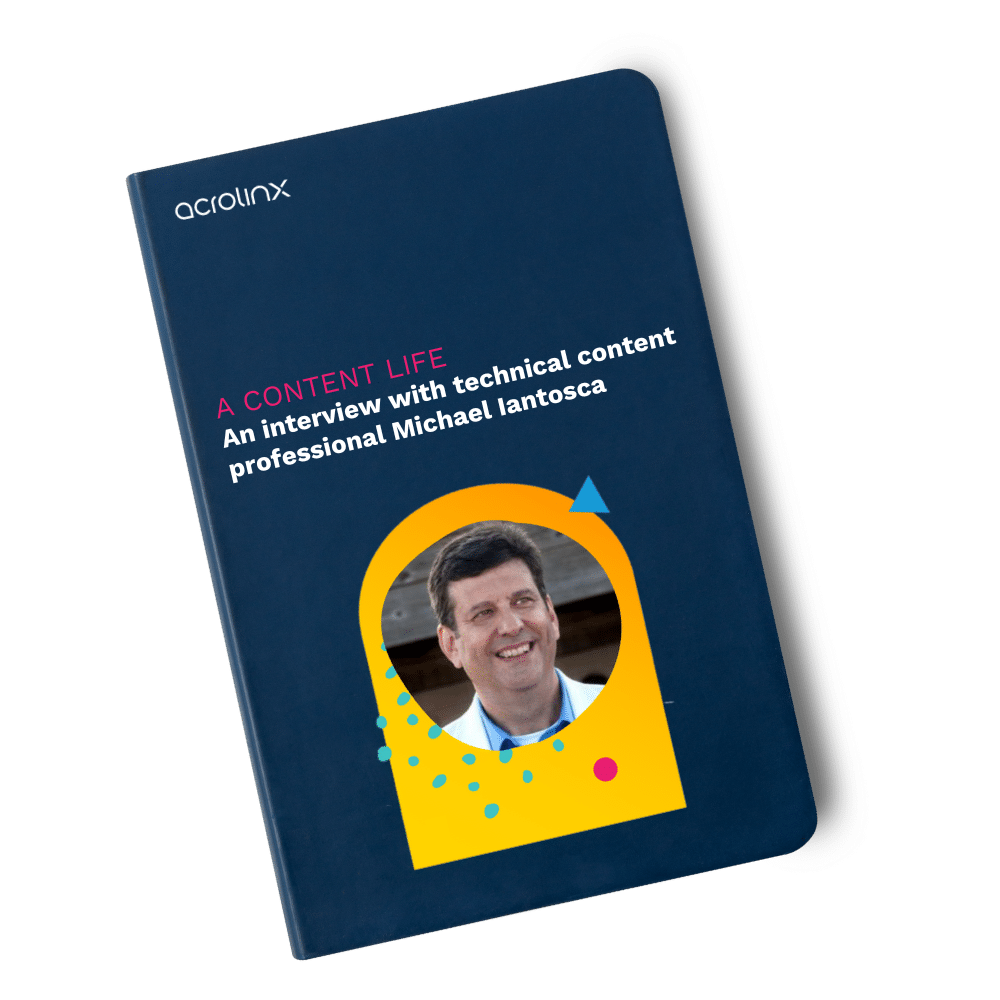
Ever feel like you’re wasting time creating your enterprise content? Different teams crafting similar information in silos? Resulting in duplicated efforts, inconsistent messaging, and a content sprawl that’s tough to manage? You’re not alone.
Enterprises often manage their digital assets through many channels and tailor them to diverse audiences. In this dynamic and demanding environment, a traditional silo approach isn’t sustainable.
That’s where the power of modular content comes in. You can build a more efficient and agile content ecosystem by breaking down your information into reusable, self-contained units. Think of them like digital building bricks.
This blog post provides a roadmap for creating and managing modular content effectively within a Component Content Management System (CCMS). It paves the way for streamlined content operations and a more consistent brand identity. Changing your approach to content production might be just what you need!
What’s modular content?
As content moves at a rapid pace, the ability to create and deploy information efficiently is paramount. Modular content makes your content production more efficient.
Think of it as breaking down your content into self-contained units, each focused on a specific topic or objective. They aren’t your typical lengthy documents or sprawling web pages. Instead, they’re bite-sized, reusable components, often referred to as content blocks or content modules.
Using the right technology, teams can easily mix and match content modules across various platforms and formats.
Now, imagine having a library of digital building blocks. You can assemble them in countless combinations. This helps you deliver the right message to the right audience at the right time. This approach offers a significant shift from creating monolithic content pieces often tied to a single output. It allows teams to publish content from a single source into many different channels and documents.
Why do enterprises need a modular content strategy?
A modular content strategy can effectively address many enterprise content challenges. Consider the sheer volume of content people create and maintain across various platforms. This includes websites, documentation portals, customer support knowledge bases, and more. Without a cohesive strategy, enterprises risk involuntarily duplicating existing content, resulting in wasted resources. Inconsistencies in terminology or tone are another related issue.
A modular approach offers a strong solution by enabling content reuse. Instead of repeatedly creating the same information from scratch, teams can take advantage of pre-approved content modules. This helps keep the brand voice, terminology, and core messaging consistent across all channels. It saves time, reduces content production costs, and speeds up time-to-market for new information and campaigns.
Teams typically manage modular content within a CCMS. Next to being a library for content modules, these systems offer review and publication workflows, streamlining content processes within and across teams.
Once approved, writers can compile content modules into various different documents. This ensures high-quality content across all publications.
How to build an effective modular content strategy
Laying the groundwork for a successful modular content approach requires careful planning and execution. Here are essential steps to guide your enterprise:
Define content modules
First, identify the core topics and information for your content modules. These can be:
- Frequently used statements
- Warnings and legal disclaimers
- Product descriptions
- And many more
Defining content modules requires analyzing your existing content to pinpoint reusable elements, and determining what content you’ll need to create.
Break down complex information into modular components that address specific questions or tasks. For example, a module might explain a single feature or troubleshooting step in technical documentation. In marketing, it could be a product description or a customer testimonial.
The objective is to create context-independent modules to be used in various situations, yet focused enough to deliver specific value.
Remember, always start by auditing your existing content to see what is worth repurposing! The less time you have to spend creating content from scratch, the better.
Establish content governance guidelines
It’s crucial to establish clear content governance guidelines before you begin creating modular content. This goes far beyond defining a few writing rules. For successfully implementing your modular content strategy, make sure to have style guides, terminology databases, and workflows for module creation and approval in place.
This makes sure that all content blocks reflect your brand identity, maintain a consistent message, and meet quality standards. A successful content governance strategy also includes defining who is responsible for creating, approving, and maintaining each module.
To streamline the content creation process, try to use as many pre-approved content modules as possible. Doing so, you make sure that your publications only contain compliant and on-brand information.
Structure your content for standardization and reuse
It’s not enough to define content modules! You also need to make sure that they follow a standardized structure to maintain consistency and enable content reuse. You want to create modules that are independent from a specific output format or platform. Use clear and concise language and avoid excessive contextual dependencies. Make sure that each module focuses on a single, well-defined topic.
Proper tagging and metadata are also essential for discoverability and efficient assembly of modules. Consider how different teams might need to access and use the same content blocks across various platforms. Your module structure should facilitate this integration.
When starting with module-based content management, consider using an XML-based standard like DITA. DITA provides a standardized framework of XML elements, which can be used to structure and modulate content. Not only does this kind of standardization enable smoother reuse, it also provides a templatized, logical approach to structuring content, which helps create clear, useful publications. XML-based standards like DITA are supported by most CCMS — and this brings us to the next aspect to consider.
Ensure integration with a CCMS
What’s a CCMS?
A CCMS is the backbone for effectively managing modular content at scale. It provides a centralized repository for storing, organizing, and controlling your content modules. Version control, workflow management, and search features make it simple for you to find and reuse approved content.
Using a CCMS to implement your modular content strategy is the quickest way to reap the full benefits of this development process. It allows for efficient content assembly and distribution across multiple channels.
Managing modular content quality
Simply having a library of modular content within a CCMS isn’t enough. The other side of this coin is making sure the content you create is high-quality, consistent, and compliant. Maintaining high standards across a vast amount of reusable content can be a significant challenge, but here’s how:
Content validation and quality control
Establishing strong content validation and quality control processes is essential with many contributors and frequent reuse across different contexts. This involves more than just basic spell-checking. You have to make sure that your information is accurate, up-to-date, and follows your organization’s style guidelines.
Implementing clear review workflows and approval processes within your CCMS is a good starting point. However, manual reviews can be time-consuming and may not always catch subtle inconsistencies or compliance issues.
AI-powered content governance
This is where the impact of Artificial Intelligence and automation becomes important. Automated content governance tools can provide an added layer of quality assurance, going beyond what human reviewers can efficiently manage at scale.
These tools automatically analyze content modules for adherence to pre-defined rules for terminology, style, grammar, clarity, and even regulatory compliance.
By integrating such capabilities within your CCMS, you make sure that all content modules meet your organization’s quality standards regardless of origin or intended use.
Tracking content reuse and performance
Understanding how often your content modules are being reused and how they’re performing is crucial for optimizing your modular content strategy. Most CCMS platforms offer some level of tracking, allowing you to see which modules are most popular and where they’re deployed.
Monitoring key performance indicators (KPIs) like user engagement, time on page, and conversion rates for content built from specific modules provides valuable insights into their effectiveness. This data can then inform future module creation and refinement efforts.
Overcoming challenges in modular content management
Even with a well-implemented CCMS, managing modular content can present certain challenges. Here are some common hurdles and potential ways to overcome them:
Problem: Breaking down existing assets and creating new modules takes a lot of time.
- Solution: Start with your most frequently used or problematic content. Prioritize modularizing content that has the highest potential for reuse. Implement a phased approach rather than trying to overhaul everything at once.
Problem: Ensuring consistent tagging and metadata for discoverability.
- Solution: Develop clear and comprehensive tagging guidelines and content taxonomies. Invest in training to make sure all content creators understand and follow these standards.
Problem: Getting everyone on board with new content creation and assembly processes.
- Solution: Provide thorough training and documentation on the principles of modular content and the functionalities of your CCMS. Champion early adopters within teams to help peer-to-peer learning.
Problem: Maintaining consistency across a growing library of modules.
- Solution: Implement content governance processes, including style guides and terminology management. Use AI-powered content governance tools that can automatically check for consistency and compliance. Regularly audit your content library to identify and address inconsistencies.
Problem: Preventing module drift, where writers create similar modules over time, leading to duplications and redundancies.
- Solution: Establish clear guidelines for module creation and naming conventions. Encourage content creators to search the existing library thoroughly before creating new modules. Regularly review and consolidate redundant modules.
How Acrolinx helps you manage a modular content library
Effectively managing a modular content library requires strong tools that can ensure consistency, quality, and compliance across all your reusable components. Acrolinx offers an AI-powered platform that integrates with CCMS and provides crucial support at every stage of the modular content lifecycle. Here’s how:
- Terminology management: Acrolinx automatically checks modules against approved terms, maintaining accuracy across all content assemblies.
- Style guide adherence: The platform provides live feedback to make sure every module aligns with your brand’s style and voice.
- Automated compliance checking: Acrolinx can highlight non-compliant content within your modular assets. You can either integrate Acrolinx’s automation capabilities into CCMS workflows – or you use them to scan whole content repositories at once.
- Real-time content scoring and feedback: Writers receive immediate scores and suggestions to improve the clarity and effectiveness of their modules.
- Facilitating content reuse with clarity: By making modules precise and unambiguous, Acrolinx improves their usability in various contexts.
- Providing valuable insights for content improvement: Acrolinx Reporting highlights areas for improvement within your content library, informing future module refinement.
Ready to test out a modular approach to content creation? Request a demo from Acrolinx to see how its platform can streamline the process!
Are you ready to create more content faster?
Schedule a demo to see how content governance and AI guardrails will drastically improve content quality, compliance, and efficiency.
The Acrolinx Team





